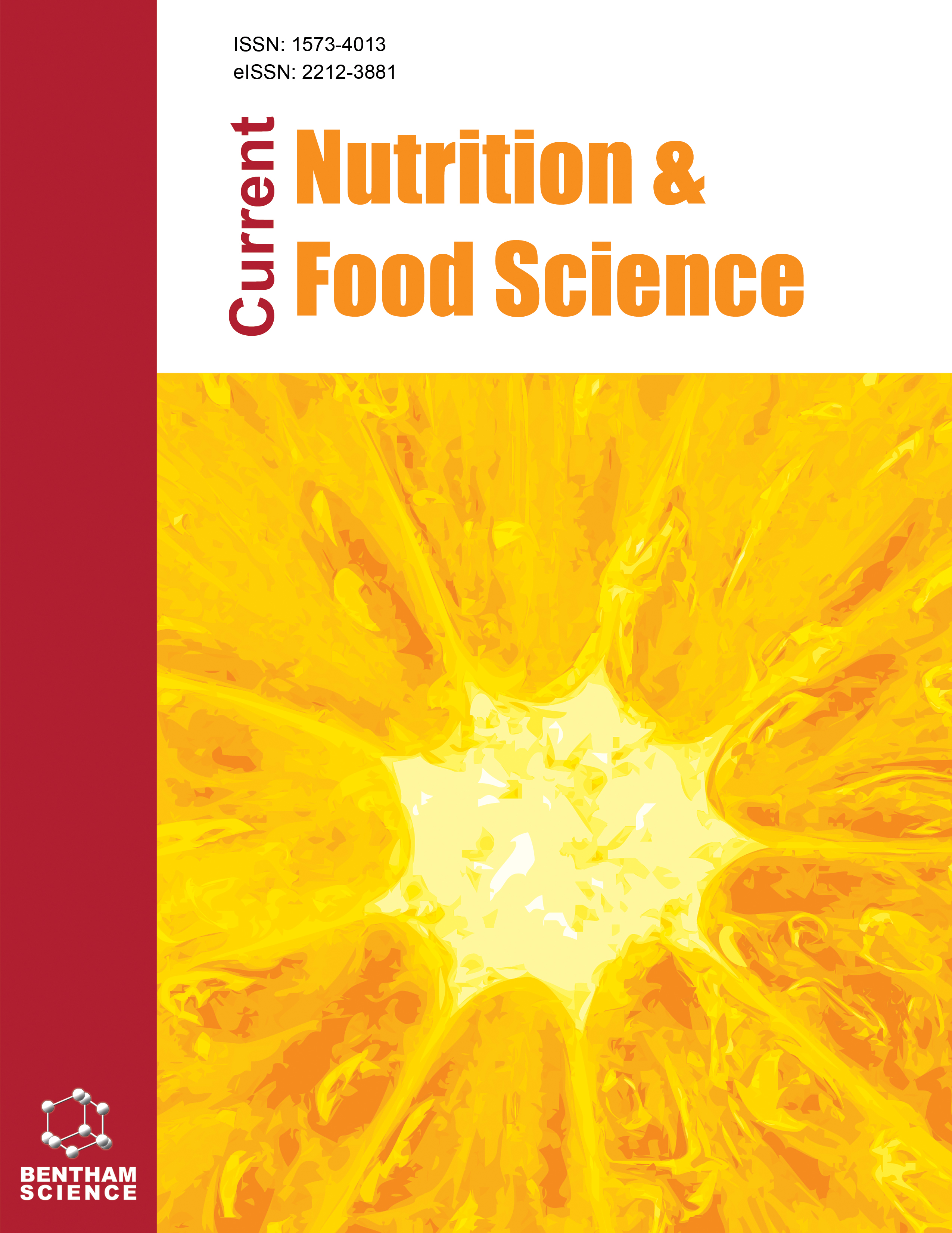- Home
- A-Z Publications
- Current Nutrition & Food Science
- Previous Issues
- Volume 6, Issue 4, 2010
Current Nutrition & Food Science - Volume 6, Issue 4, 2010
Volume 6, Issue 4, 2010
-
-
Olive Oil and Apoptosis of Cancer Cells
More LessAuthors: Nadia Sabatini and Enzo PerriOlive oil, the major source of mono-unsaturated fatty acids in the Mediterranean basin, appears to be protective against various human diseases including cancer. Recent studies have reported that major and minor components of olive oil can significantly counteract carcinogenesis in mutant cells by activating specific metabolic pathways involved in the apoptosis. Apoptosis is a cell suicide programme essential for developing Read More
-
-
-
Maternal Fish Oil Supplementation: The Prodrom of Synaptic Protection in Alzheimer's Disease
More LessAuthors: Massimo F.L. Pomponi, Massimiliano Pomponi and Giovanni GambassiProspective longevity is overshadowed by the high prevalence of mental decline in aging. Hence, nutritional indications are a crucial element in today's observed aging of the population. There is now growing epidemiological evidence suggesting that reduced levels of docosahexaenoic acid [DHA, 22:6, (n-3)] may be indicative of an increased risk of Alzheimer's disease (AD). On the other hand, the Mediterranean diet includes Read More
-
-
-
Dietary Approaches and Alternative Therapies for Rheumatoid Arthritis
More LessAuthors: Vijaya Juturu and Joel KremerRheumatoid arthritis (RA) is an autoimmune disease. RA causes pain, swelling, and stiffness in a person's joints and problems with functioning. Conventional medicine is used to relieve pain, reduce swelling, slow down or stop the damage to joints, help the person function better, and improve the person's sense of well-being. RA medications include non-steroidal anti-inflammatory drugs (NSAIDs), disease-modifying ant Read More
-
-
-
Iron Status in Infants and Relation to Dietary Intake. Part 1: General and Developmental Aspects
More LessAuthors: Katharina Dube, Mathilde Kersting and Hermann KalhoffIron deficiency is one of the leading nutritional problems worldwide, affecting an estimated total of about 2 billion individuals. Nearly 40% of children younger than 5 years and about 50% of pregnant women in developing countries are anaemic. However, iron deficiency is also common in women and young children in industrialised countries. Due to developmental and maturational processes and needs, there are some pa Read More
-
-
-
Iron Status in Infants and Relation to Dietary Intake. Part 2: Dietary Iron Intake During Infancy
More LessAuthors: Katharina Dube, Hermann Kalhoff and Mathilde KerstingDue to the low iron content of human milk, the dietary iron intake during the period of exclusive breast-feeding is very low. During the first months this low intake does not seem to severely impair the iron status of breast-fed infants, rather prenatally acquired iron stores are used. However, with iron requirements expanding related to rapid growth, additional dietary iron is needed in full-term appropriate-for-gestational-age breas Read More
-
-
-
Selenium Deficiency in Soils and Crops and its Impact on Animal and Human Health
More LessAuthors: Umesh C. Gupta and Subhas C. GuptaSelenium (Se) content in soils varies greatly depending upon the parent rock, weathering, pH and texture. In general, total soil Se content of 0.1 to 0.6 mg kg-1 is considered deficient. Selenium deficiency regions in New Zealand, Denmark and the Atlantic Region of Canada contain 0.1 to 0.6 mg Se kg-1 in the soil. Soil acidity is an important factor resulting in decreased Se availability to crops. Selenium concentration in plants can Read More
-
-
-
Glucosinolates-Secondary Plant Products as Important Complex Interaction in our Biosphere
More LessAuthors: H. Zukalova and D. Becka J. VasakGlucosinolates are the substituted esters of thio amino acids and their synthesis is based on the corresponding amino acids. Methionine and cysteine are the natural donors in the case of the Brassica plants and L tryptophane in the indole glucosinolates, respectively. In Brassica genus, alkenyl glucosinolates are mostly present and their content and composition differ as far as the development stage and the part of the p Read More
-
-
-
Rearing and Eating Locally-Grown Organic Small-Scale Poultry and Rabbits in British Columbia, Canada
More LessAuthors: Cheryl Lans and Nancy TurnerEthnoveterinary remedies used for poultry and rabbits in British Columbia were obtained from interviews and a participatory workshop held with organic poultry and rabbit keepers in British Columbia. Medicinal plants are used to treat a range of conditions in small-scale organic agriculture. Nineteen species of plants representing 12 plant families were documented for treating poultry and eleven species from eight families f Read More
-
Volumes & issues
-
Volume 21 (2025)
-
Volume 20 (2024)
-
Volume 19 (2023)
-
Volume 18 (2022)
-
Volume 17 (2021)
-
Volume 16 (2020)
-
Volume 15 (2019)
-
Volume 14 (2018)
-
Volume 13 (2017)
-
Volume 12 (2016)
-
Volume 11 (2015)
-
Volume 10 (2014)
-
Volume 9 (2013)
-
Volume 8 (2012)
-
Volume 7 (2011)
-
Volume 6 (2010)
-
Volume 5 (2009)
-
Volume 4 (2008)
-
Volume 3 (2007)
-
Volume 2 (2006)
-
Volume 1 (2005)
Most Read This Month
Article
content/journals/cnf
Journal
10
5
false
en


